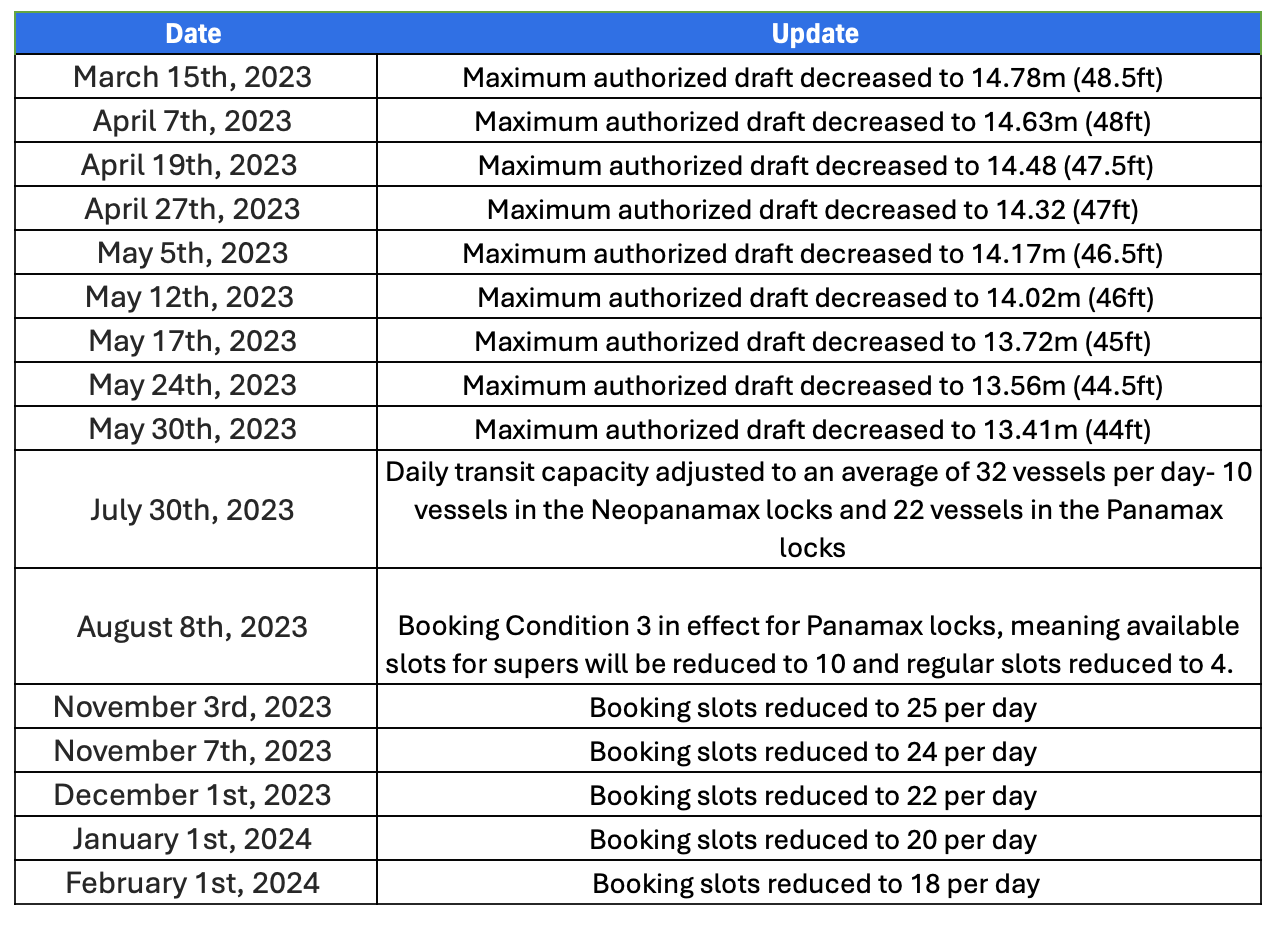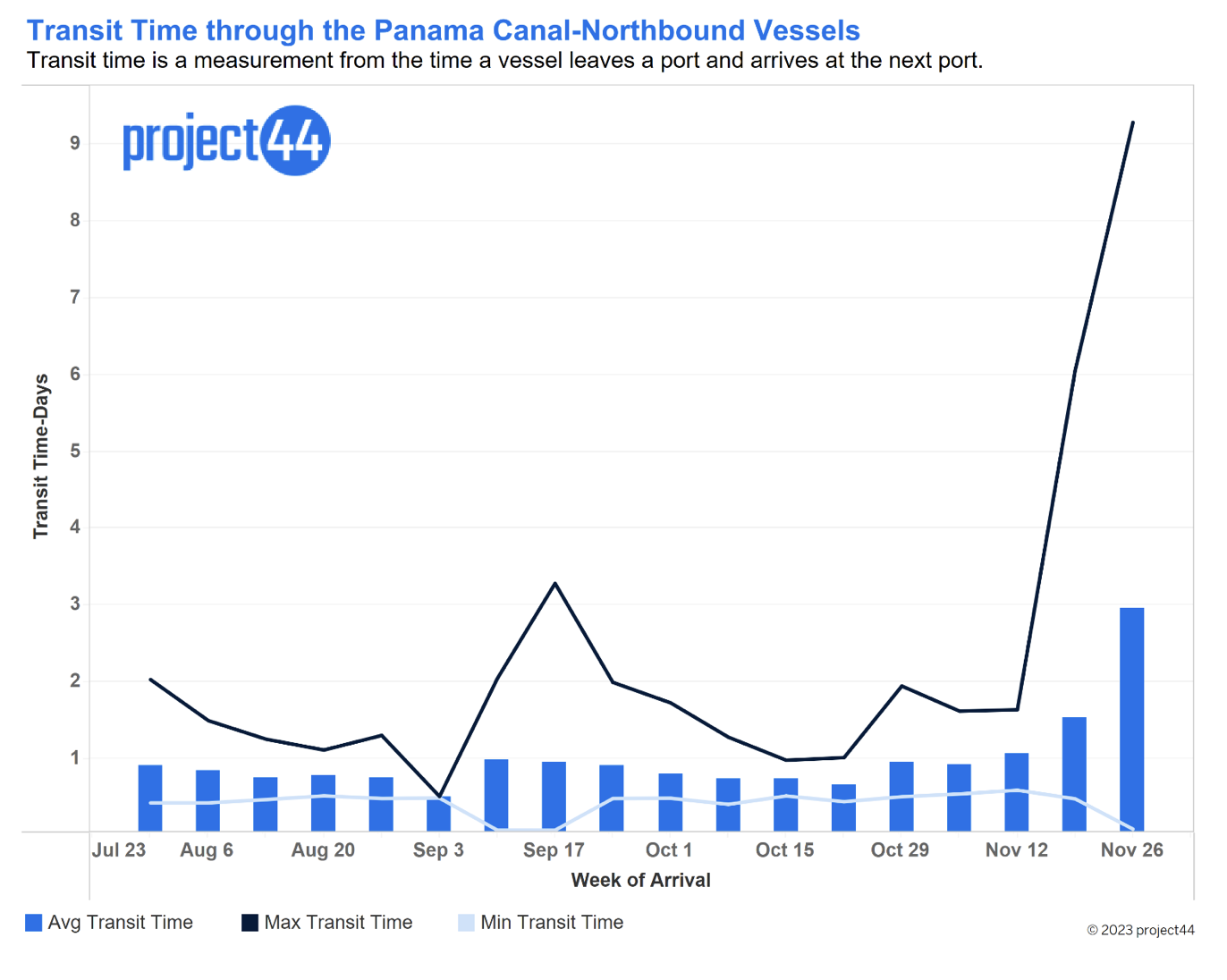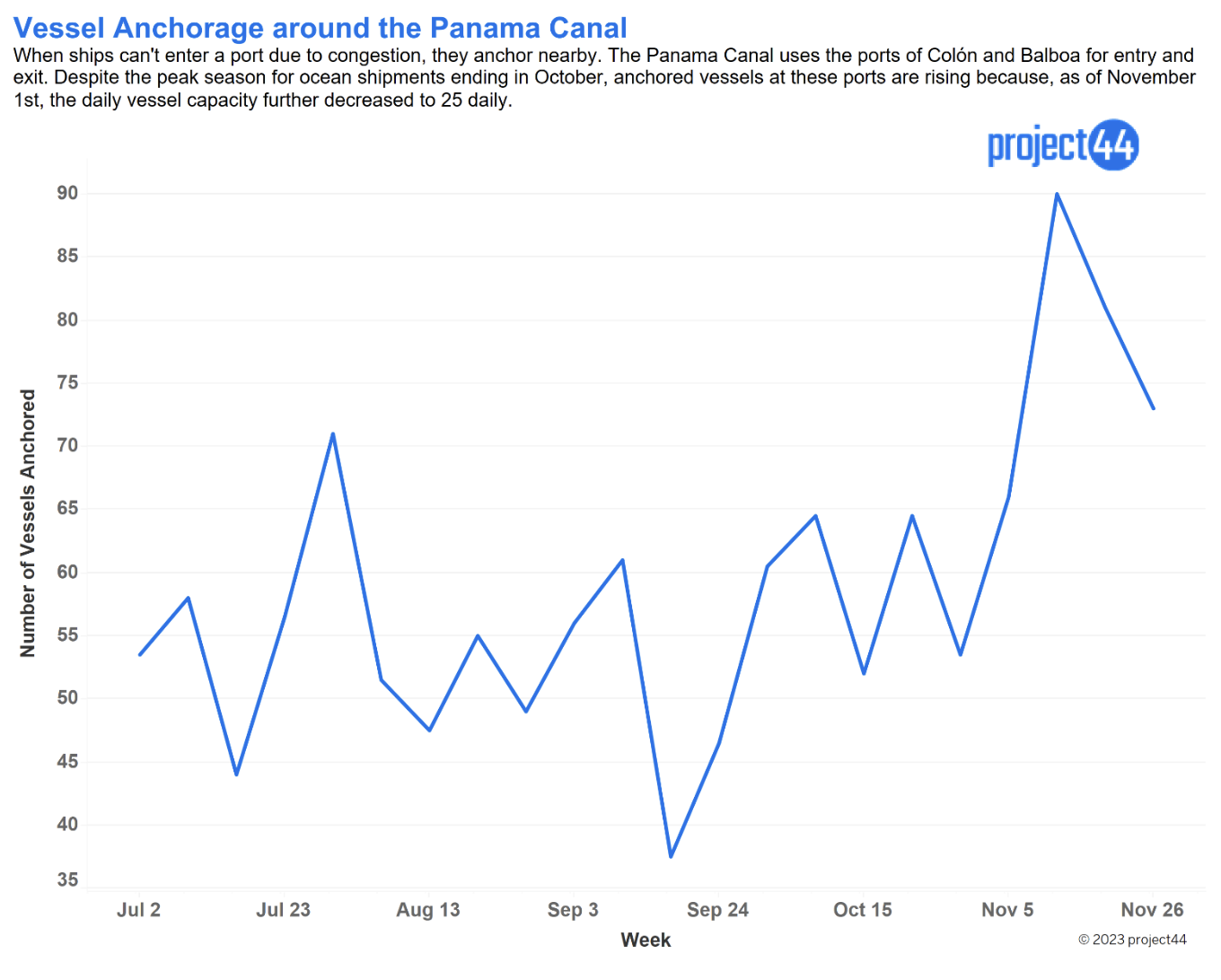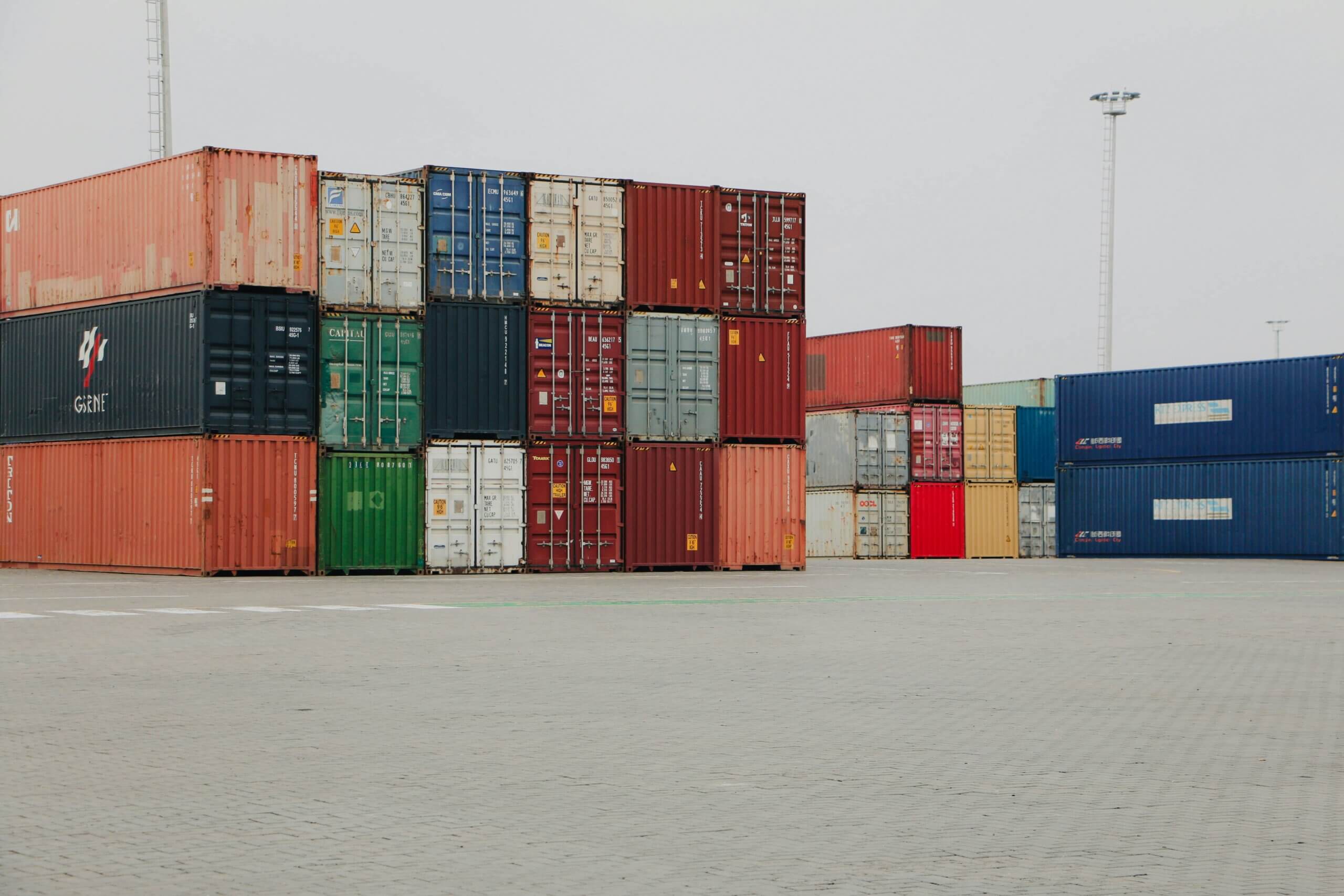The Panama Canal, a vital artery for global trade transporting ~40% of the world’s ocean volume, has faced unprecedented challenges in recent months. A severe drought exacerbated by El Niño has led to a series of events impacting shipping routes, vessel capacities, and supply chain dynamics. In this blog post, we’ll delve into the evolving timeline of the Panama Canal crisis and explore its wide-reaching impacts on industries, shipping, and global commerce.
Restrictions started with draft limitations, which limits the depth to which a vessel is submerged in water. As a result, vessels passing through the canal must carry less weight, limiting their overall capacity. As drought conditions continued, booking slots were reduced limiting the number of vessels able to pass through the canal. Below outlines the timeline in which these restrictions were introduced
Timeline of Restrictions

Impacts to Global Supply Chains
The repercussions of these restrictions unfolded gradually. Initially, only one vessel exceeded draft limitations, compelling it to unload and transfer containers, causing delays. However, the real blow came with the drastic capacity cuts. The canal, once accommodating an average of 36 vessels daily, now operates at 22, constituting a nearly 40% decrease in volume, excluding container volume lost to lower draft thresholds.

Despite the reduced capacity starting at the end of July, November is where the widespread impacts were seen. Initially, the limited capacity was impacted only non-booked vessels, which is illustrated with the spikes to maximum transit time through the canal, but the average and minimum transit time remained stable. While minimum transit time remains stable, the average time has increased 200% since the week of November 12th and maximum transit has skyrocketed to over 9 days.
We are also seeing an increase in the number of vessels having to anchor outside of Colón and Balboa, which are the ports that border the canal. The week of November 9th had 90 container vessels anchored near port, and while the week of the 26th saw a decrease, the number is still trending high.

While the peak season for ocean shipments concluded in October, congestion and bottlenecks persist. As depicted in the charts, congestion and bottlenecks through the canal are far from over and will continue to get worse as scheduled capacity decreases go into effect. There is no simple short-term solution to the issues that the droughts have exasperated.
Shippers face tough decisions. Rerouting through the Suez Canal or around the Cape of Good Hope adds transit time, while diverting shipments to West Coast ports with subsequent rail and truck transportation may reduce transit time but incurs additional costs and necessitates an expanded transportation network.
In the face of these complications, shippers must carefully analyze whether the Panama Canal, in its current state, remains the optimal choice in their supply chains. Tough decisions lie ahead as the industry seeks alternatives to navigate the turbulent waters brought about by the Panama Canal crisis.
For more on the impact of challenges facing the Panama Canal, be sure to follow Supply Chain Insights, powered by project44 proprietary data.



